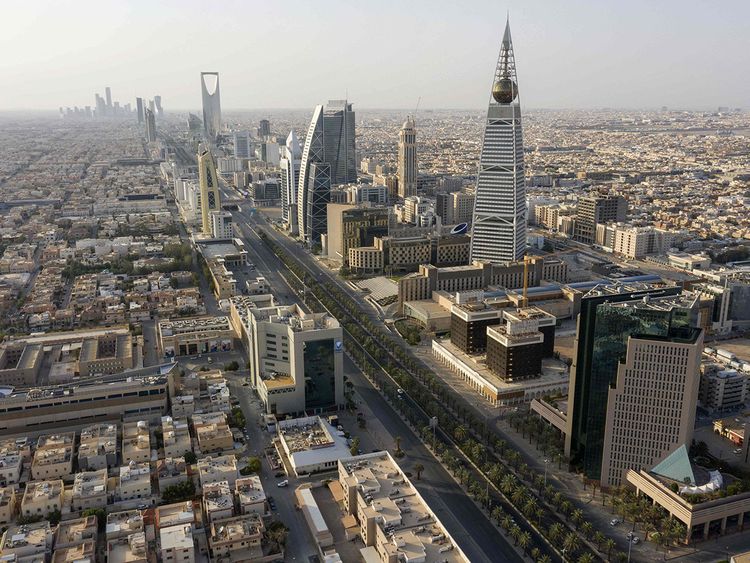As we know, the global COVID-19 pandemic has had a drastic impact on the entire world, but I want to focus on how it has affected and altered the people of Saudi Arabia and Yemen.
According to the CDC, Saudi Arabia is currently at a level 3 warning, meaning that it is high risk (Centers for Disease Control and Prevention, 2020). Resources are limited in the region and travel restrictions may not allow visitors or those that call Saudi Arabia home to cross specific borders. An article from the Wall Street Journal gave notice of the first case in the country, being confirmed on March 2nd, 2020 (Said, 2020). As of today, the total cases in Saudi Arabia have climbed to 320,688, with the death toll reaching 4081 (The New York Times, 2020).
As of July 2020, cases had risen in a few of the country’s hot spots, with “Mecca reporting the highest number of new infections, with 224 cases. Meanwhile, Riyadh recorded 212 new cases, Jeddah recorded 189, and Al Hafouf recorded 182, according to the health ministry” (Abueish, 2020). It was anticipated that during Ramadan cases would surge, so it will be interesting to see if the pandemic lasts into 2021, where countries will see an uptick in cases accordingly.
Saudi Arabia did take a more aggressive approach to the virus right off the bat, as was discussed in a report published by the US National Library of Medicine, “On March 8th, the Saudi government shifted schools and universities to remote learning and virtual classrooms. This was accompanied by a travel ban to all affected countries and putting in place mandatory quarantine for passengers who already arrived from these countries. On March 9th, Saudi Arabia pledged 10 million US dollars to the WHO to help in their efforts to fight the pandemic. By March 12th, all social and governmental gatherings and events were suspended or postponed including the Saudi-African and Arab-African summits. Subsequently, all international and domestic air travels, sports events, workplaces (except security and health sectors) were suspended. In addition, the five daily prayers in all hundreds of thousands of mosques across the country were banned and all Muslims in Saudi Arabia were requested by religious authorities to pray at homes for the very first time in the history of the Kingdom. Digital health was quickly activated and utilized for several services such as a “my health” app that allows people to seek medical help and receive medical prescriptions without the need to visit the medical centers. It is important to note that all of these measures were taken while the number of confirmed cases in Saudi Arabia was still less than 300, in a country with over 34 million population ” (Algaissi, Alharbi, Hassanain, & Hashem, 2020). Although the kingdom did take drastic measures to prevent the spread of the virus, economic damage was inevitable, negatively effecting migrant workers and hitting their oil market very hard.

Shifting now to take a look at Yemen, we can see that there has been a much different response to the pandemic. As of September 6th, Yemen has 1983 confirmed cases and 572 recorded deaths (The New York Times, 2020). However, as it was believed that the actual numbers are much higher (Schlein, 2020). There is a stigma and fear driven into the people that impacts how numbers are recorded. It is believed that rebel groups have been threatening people in Yemen to stay quiet about COVID-19 (Raghavan, 2020).
Yemen has been shaken by famine and war over the last few years and it has drastically impacted their health system and economy, weakening their ability to respond to crisis. It has been on catastrophe after the next.
Due to a lack of funding, equipment, and adequate training for health care personnel, Yemen’s response to the pandemic has been delayed. The “hotspot” could be considered to be Aden, where hospitals are overcrowded and lack equipment, but it is safe to say that there is much more going on that may not be receiving proper coverage. During a recent podcast, Doctors without Borders explained a bit about the situation in Yemen, stating the following, “our teams in Yemen are dealing with many, many challenges there from having access to COVID tests, personal protective equipment which has been a pressure point for many of our teams around the world, and of course inadequate hospital staffing and misinformation about the virus” (Benoît, 2020). Those who live in poverty or are starving are the most vulnerable, but not much better off than the rest of the country.

Hopefully, close monitorization and tracking will help countries navigate the pandemic moving forward and work to reduce cases and deaths.
Bibliography
Abueish, T. (2020, July 19). Coronavirus: Mecca new hotspot as Saudi Arabia detects 2,565 COVID-19 cases, 40 die. Retrieved September 06, 2020, from https://english.alarabiya.net/en/coronavirus/2020/07/18/Coronavirus-Saudi-Arabia-detects-2-565-new-COVID-19-cases-40-deaths
Algaissi, A., Alharbi, N., Hassanain, M., & Hashem, A. (2020, June). Preparedness and response to COVID-19 in Saudi Arabia: Building on MERS experience. Retrieved September 06, 2020, from https://www.ncbi.nlm.nih.gov/pmc/articles/PMC7211706/
Benoît, A. (2020, August 06). Let’s talk COVID-19: Crisis after catastrophe in Yemen. Retrieved September 06, 2020, from https://www.doctorswithoutborders.org/take-action/attend-event/lets-talk-covid-19-crisis-after-catastrophe-yemen
Centers for Disease Control and Prevention. (2020, August 06). COVID-19 in Saudi Arabia – Warning – Level 3, Avoid Nonessential Travel – Travel Health Notices. Retrieved September 06, 2020, from https://wwwnc.cdc.gov/travel/notices/warning/coronavirus-saudi-arabia
The New York Times. (2020, January 28). Coronavirus Map: Tracking the Global Outbreak. Retrieved September 06, 2020, from https://www.nytimes.com/interactive/2020/world/coronavirus-maps.html
Raghavan, S. (2020, June 03). Rebel threats, secret burials and shuttered hospitals mask spread of Yemen’s epidemic. Retrieved September 06, 2020, from https://www.washingtonpost.com/world/middle_east/rebel-threats-secret-burials-and-shuttered-hospitals-mask-spread-of-yemens-epidemic/2020/06/03/76583a68-a034-11ea-be06-af5514ee0385_story.html
Said, S. (2020, March 02). Saudi Arabia Confirms First Case of Coronavirus Infection. Retrieved September 06, 2020, from https://www.wsj.com/articles/saudi-arabia-confirms-first-case-of-coronavirus-infection-11583173976
Schlein, L. (2020, July 21). Thousands of Yemenis Flee COVID-19 Hotspots. Retrieved September 06, 2020, from https://www.voanews.com/covid-19-pandemic/thousands-yemenis-flee-covid-19-hotspots